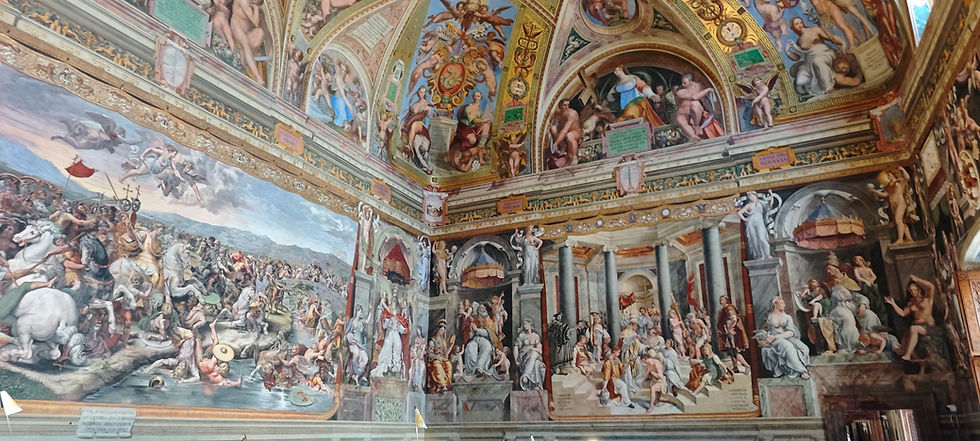Vatican Museum
- Boaz Albert

- Aug 4
- 3 min read
About 15 years ago, I traveled to Rome for the first time, and of course, I went to visit the Vatican Museums. I didn't want to "waste" money on a guide, and I believed I could manage on my own. It was a big mistake. The museum is enormous, displaying countless artworks, historical artifacts, and architectural details. You truly cannot see everything, not even a tiny fraction of the exhibits. And if you're not an expert in the field, you probably won't know which is the most important painting, or the most famous sculpture, or what story lies behind which room or display. I remember when I left there, I promised myself I wouldn't repeat this mistake next time.

And indeed, when we planned this trip, it was clear to me that we would visit the Vatican Museums with a guide - and it proved itself. Right from the start, when we saw the lines at the Vatican entrance, we were happy about our decision to take a guided tour. Early August, sun, heat... Crowds of people who had purchased museum tickets for a specific time - standing and waiting. When we showed one of the organizers in the area our ticket for the guided visit, he immediately put us in the fast line and we entered the air conditioning... I thought then that this alone was worth the extra payment.

Our guide was simply amazing. She didn't just talk about the art - she brought the place to life with spicy and interesting stories about the popes, the artists, and the politics behind the works. She highlighted the important exhibits (instead of us wandering lost among thousands of items), gave professional tips on what to look at in the paintings and frescoes, and how to read the symbols and hidden messages. The tour ends in the Sistine Chapel, where, due to overcrowding, the guides don't speak inside, but explain everything you need to know outside.
The Vatican Museums are a complex of 54 different galleries and halls, containing one of the world's largest and most important art collections. The collection began to be built in the 16th century by Pope Julius II, who commissioned Michelangelo to paint the ceiling of the Sistine Chapel.
The papal palaces became over the years a place where artworks from around the world were gathered - ancient Roman sculptures, Renaissance art, archaeological finds, and religious treasures.
The Sistine Chapel
The undisputed star of the museum. Michelangelo's famous ceiling with "The Creation of Adam" and "The Last Judgment" painting on the eastern wall. This is where popes are elected to this day. Unfortunately, photography is not allowed in the place.
The Raphael Rooms (Stanze di Raffaello)
Four rooms painted by Raphael and his students, with the famous fresco "The School of Athens" - a masterpiece depicting the great philosophers of antiquity.


The Pio-Clementine Museum
Halls with an amazing collection of ancient Roman and Greek sculptures, including the Apollo Belvedere and Laocoön and His Sons - sculptures that influenced Western art for centuries.

The Gallery of Maps
A 120-meter-long corridor with painted maps of Italy from the 16th century, an impressive work of cartographic art.

In my opinion, a visit to Rome without the Vatican Museums is a miss. It's such a large and rare collection of treasures that truly defines the development of human art and culture. Come prepared for at least 3 hours. Arrive half an hour early to get a place in line (if you haven't taken a guided tour) or to join your group on time.














Comments